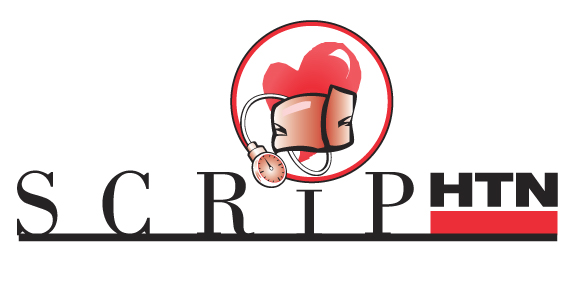
Study Objective:
The primary objective of this study is to determine the efficacy of a community-based multidisciplinary screening and intervention program on blood pressure control in patients with diabetes and elevated blood pressure.
Secondary objectives include comparing intervention and usual care parameters (initiation or dose addition of antihypertensive drug therapy, blood pressure target achievement, proportion of patients prescribed an ACE inhibitor or angiotensin receptor blocker) and describing community practice patterns (proportion of patients achieving blood pressure target, factors associated with achievement of blood pressure targets).
Principal Investigator:
Ross T. Tsuyuki, PharmD, MSc
Co-investigators:
Finlay A. McAlister, MD, MSc, Kathryn King, RN, PhD, Jeffrey Johnson, PhD, Charlotte Jones, MD, PhD, Donna L. McLean, RN, MN
Status of project:
Completed
Start date of study:
May 3, 2005
End date of study:
Projected Fall 2006
Population studied:
Edmonton and surrounding area adult residents with type 1 or type 2 diabetes and elevated blood pressure (greater than 130/80 mm Hg on 2 consecutive visits 2 weeks apart) are eligible for study participation.
Research site:
Patient assessment and recruitment will occur at fifteen community pharmacies (The Medicine Shoppe Pharmacy) in Edmonton and surrounding area. Data collection, quality assurance and analysis will be performed by EPICORE Centre/COMPRIS, Division of Cardiology, University of Alberta, Edmonton, Alberta.
Study design:
A randomized design will be used to randomize patients to pharmacist/nurse intervention or usual care. A secure Internet randomization service at the EPICORE Centre will randomize patients in a 1:1 ratio stratified by pharmacy study site. A sample size of 110 patients per group will be recruited (to account for drop-out and provide 90 % power).
Methods:
Patients will be recruited by community pharmacies and referrals from the Capital Health Regional Diabetes Intake Program. At visit #1, the nurse will complete a history and physical exam (including blood pressure) and the pharmacist will review the patient’s medication history. If the averaged blood pressure readings are greater than 130/80 mm Hg, the patient will be invited to attend a second clinic in 2 weeks. If the averaged blood pressures from both visits are greater than 130/80 mm Hg, the patient will be invited to participate in the study. The intervention group will receive a blood pressure wallet card with discussion regarding the meaning of blood pressure measures, cardiovascular disease risk reduction counselling, a hypertension education pamphlet, and referral to their primary care physician for further assessment or management. The blood pressure results will be faxed along with any recommendations to the patient’s physician. Written recommendations from local opinion leaders will be used to reinforce the latest hypertension guidelines. Follow up will occur at 6 weeks to ensure that patients have made an appointment with their physician and to measure blood pressure. Blood pressure will be measured at 6 week intervals (until week 24) with faxing of results and recommendations to the primary care physician. The usual care group will receive a blood pressure wallet card with their recorded blood pressure measures, general diabetes advice given by the pharmacist or nurse, usual care by their primary care physician, and a diabetes education pamphlet (from the Canadian Diabetes Association). There are no scheduled follow up visits and one phone call will be made at 12 weeks to inquire about changes to blood pressure management. A final follow up visit will occur at week 24 to re-evaluate blood pressure and to offer the patients the initial phase of the intervention program. Evaluation of primary and secondary outcomes will occur at the completion of all follow up visits. Demographic characteristics will be summarized using percentages for categorical variables and medians (interquartile range) for continuous variables. To compare the change in blood pressure between intervention and usual care, we will use a 2-sample independent t-test.
Abstract:
Community pharmacist practices in hypertension management
Donna L.McLean,RN,MN; Tammy J.Bungard,BSP,PharmD; Carolyn Hui;
Ross T.Tsuyuki,PharmD,MSc,FCSHP,FACC; EPICORE Centre,University of Alberta,Edmonton,AB
CPJ/RPC • MAY/JUNE 2006 • VOL 139, NO 3 [SUPPL 1] (pdf)
Publications:
McLean, D. L., et al. (2008). A Randomized Trial of the Effect of Community Pharmacist and Nurse Care on Improving Blood Pressure Management in Patients With Diabetes Mellitus. Arch Intern Med, 168, 2355-2361. (link)